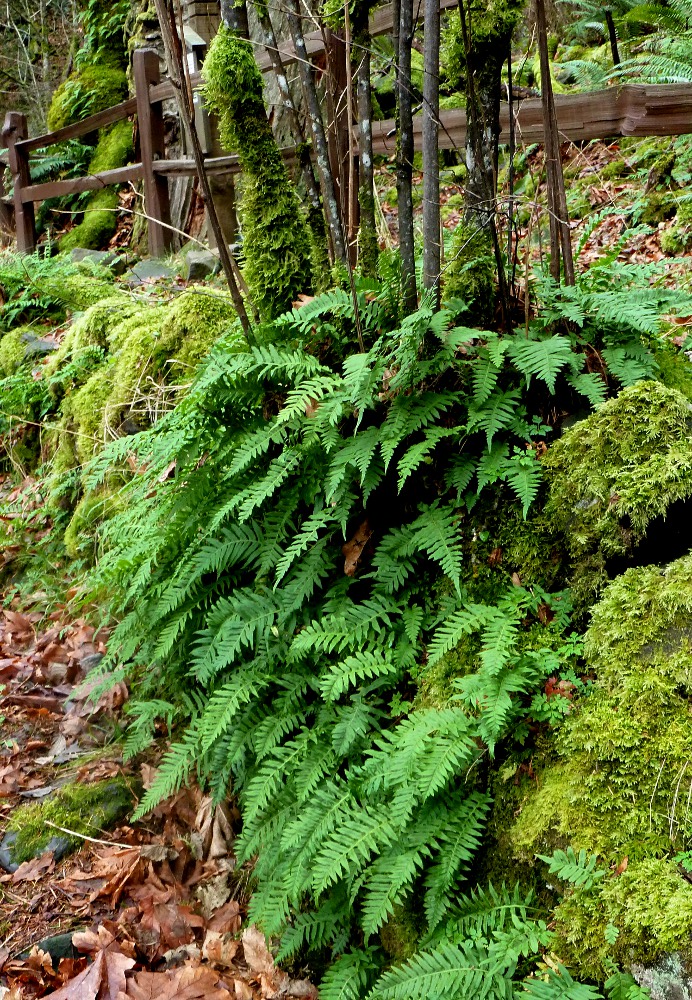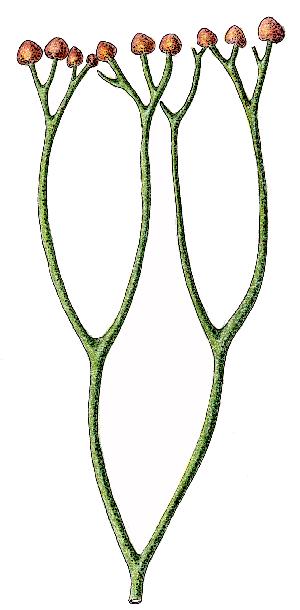Alright, let’s try this again. I’ve been neglecting writing for a couple of weeks between running Curious Gallery, and recovering from running Curious Gallery (plus finally making some progress on the Tarot of Bones.) However, I haven’t forgotten about my blog readers, so here’s the next installment in Totemism 201!
Almost all of the material available on totemism concerns animal totems. Their plant, fungus and other counterparts are generally ignored; plants and fungi rarely get much attention beyond being used in herbalism and spells, and other than trees and hallucinogenic fungi few plant and fungus totems are addressed in specific. I’ve already addressed this topic before; here I’d like to talk more about what makes moving beyond the animals a Totemism 201 topic.
–Animals are the easiest for us to connect with.
We are animals, human apes. It’s generally easiest for us to connect with beings that we feel affinity toward, and so we can temporarily adopt the (perceived) mindset of a fellow animal more easily than that of, say, a dandelion or turkey tail fungus. If you look at the most common animal totems, you’ll notice that many of them are large mammals, easier for us to observe and interact with. The less like us we think an animal is, the less likely we are to work with its totem.
It’s even tougher for us to resonate with a non-human being. How do you think like a tree when trees don’t have brains? How do you learn life lessons from a fungus that live underground much of the time and, to our perception, doesn’t even move? Do bacteria and protists even have anything to teach us?
To be fair, it can be more challenging to communicate with a non-animal totem, even when we’re willing and interested. Their priorities for themselves and their physical counterparts are often different than what we might expect; my experiences with Black Cottonwood illustrated that as one good example. And they perceive the world in very different ways; many of them simply see us humans as one of a host of animals thundering our way across the landscape, here then gone in seconds. So they aren’t always as eager to open up to us as some animal totems.
So some people simply stick to what’s easiest and most familiar–animal totems, and more specifically Big, Impressive North American Birds and Mammals. For those who do venture into more seemingly alien territory, there are some potential benefits–read on.
–Non-animal totems encourage us to have a more systemic view of totemism
I’ve often talked about how many people seem to assume that totems simply float over our heads like parade balloons, waiting for us to notice them or call upon them for help. From my experience, they inhabit their own spiritual ecosystem (whether you feel that’s a figment of your psyche or an actual alternate dimension is up to you to decide.) And the plant and fungus totems aren’t just the set dressing for dramas involving the animal totems; rather as in our reality, the totems of all living beings interact with each other in a complex, multi-layered series of relationships.
This is why I’m skeptical when someone says they have only one totem, especially if they’ve been practicing totemism for a while. My experience has been that totems tend to introduce their people to fellow totems they have positive relationships with. Steller’s Jay, for example, introduced me to Douglas Fir, who also introduced me to Douglas Squirrel, Northern Flicker, and several other arboreal totems. Granted, my connection with Steller’s Jay is stronger than that with most of those others, but at least the introductions have been made and can develop organically from there.
Conversely, this also helps me to appreciate the totems as individuals, rather than one-dimensional stereotypes. Seeing how they interact together allows me to learn more about them both on their own and as a community. And it encourages me to value all the totems of an ecosystem, not just the animals.
–They also encourage us to respect living beings besides animals.
That value extends beyond the totems themselves to their physical counterparts. Animals are just one part of a series of complex and multi-layered ecosystems whose intricacies we don’t fully understand. With deeper connections to totems comes a greater sense of responsibility toward their physical counterparts, and many experienced totemists are also environmentalists of one sort or another. What we find as we become more engaged in environmental activism is that it’s tough to be effective when you’re a one-issue activist. Sure, lots of people want to protect gray wolves, but you can’t protect the wolves without protecting the animals they prey on, and you can’t protect the prey if the prey have nothing to eat and nowhere to go. So “save the wolves!” quickly turns into “save the elk”, “save the grasslands” and “save the migration routes.”
There’s a sort of chauvinism that encourages us to see non-animal beings as nothing more than set dressing for our own kind. But when we interact with their totems, and find that they’re every bit as spiritually adept and important as the animal totems, it makes us question that “plants are just scenery” viewpoint. But that’s good for us, really. Even if you strictly work with the animals, it behooves you to respect the plants, fungi and other living beings they rely on to survive and thrive. After all, we’re animals, and without the plants and fungi and bacteria, we wouldn’t be here either. So widen your view a bit, and appreciate your entire community, not just the ones closest to you in biology.
How do you get in touch with non-animal totems (if you aren’t already)? Well, a good start is to ask your animal totems to introduce you to some of the plant/fungus/etc. totems they associate with. Together, the totems can explain why they rely on each other and what sorts of spiritual implications that may have for you. You might also ask the animals which ones they don’t especially care for; there’s lessons to be learned from those more antagonistic relationships as well. (Just avoid calling on totems who don’t like each other in the same meditation/ritual/etc.)
You’re also welcome to simply go outside (in the physical world or in meditation) and see if any non-animal totems try to catch your attention. I’ve found that the plants and fungi, for example, have a tendency to be more subtle in their communications, and so we often miss when they’re doing the equivalent of yelling “HEY!” at us. Slow down, be more observant and receptive, and don’t necessarily look for the same signs you might with animal totems. Rather than seeing a particular plant, you might feel a gentle tug in a particular direction that brings you to that being and its totem. Or you might feel drawn to sit beneath a large tree whenever you go by it, not for the tree’s sake but for the fungus growing on its bark.
As you work more with non-animal totems you’ll learn more of their unique ways of communicating, their priorities, and the things that make them unique. Totemism really isn’t just an animal thiings, and in my next post I’ll talk about why totemism isn’t just about us humans, either.
A master list of Totemism 201 posts may be found here.
Did you enjoy this post? Please consider purchasing one or more of my books on totemism and related topics! They include more in-depth information on working with totems, to include topics not discussed in this essay series.



